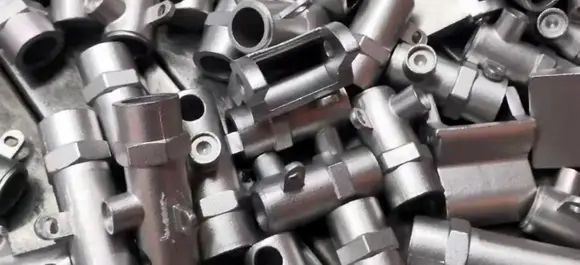Mobile:+86-311-808-126-83
Email:info@ydcastings.com
English
stainless steel casting
The Advantages and Applications of Stainless Steel Casting
Stainless steel casting is a manufacturing process that allows for the creation of complex metal parts with high precision and excellent surface finish. This method involves pouring molten stainless steel into a mold, where it cools and solidifies to take on the shape of the mold. The resulting components are known for their durability, corrosion resistance, and aesthetic appeal, making them indispensable across various industries. In this article, we will explore the advantages and applications of stainless steel casting, shedding light on why it is a preferred choice for many engineering applications.
Advantages of Stainless Steel Casting
1. Corrosion Resistance One of the most significant advantages of stainless steel is its exceptional resistance to corrosion. This property is crucial in industries where materials are exposed to harsh environments, such as chemicals, seawater, and extreme temperatures. Stainless steel casting ensures that components maintain their integrity and appearance over time.
2. Strength and Durability Stainless steel is renowned for its mechanical properties. It offers high tensile strength and toughness, making castings resilient to wear and impact. This durability is essential for components that are subject to heavy loads or stress, thereby extending their service life.
3. Cost-Effectiveness Although the initial investment in stainless steel casting may be higher than other materials, the long-term savings due to reduced maintenance and replacement costs make it a cost-effective solution. The longevity and reliability of stainless steel castings can significantly lower lifecycle costs.
4. Design Flexibility Stainless steel casting allows for the production of complex geometries that would be difficult or impossible to achieve with other manufacturing methods. The ability to create intricate designs enables engineers to optimize performance and reduce material waste.
5. Aesthetic Appeal Stainless steel has a modern and sleek appearance, making it a popular choice for applications where aesthetics matter. Finished castings can be polished or brushed to achieve a desired look, making them suitable for consumer products, architectural components, and more.
6. Heat Resistance Many grades of stainless steel are capable of withstanding high temperatures, which is beneficial in applications involving heat exposure. This property is particularly advantageous in the automotive and aerospace sectors, where components must endure extreme conditions.
Applications of Stainless Steel Casting
stainless steel casting

Stainless steel casting is utilized in a wide range of industries due to its advantageous properties
. Some of the most common applications include- Aerospace Components such as engine parts, brackets, and fittings made from stainless steel castings are used in airplanes and spacecraft. The need for lightweight yet strong materials makes stainless steel an ideal choice for aerospace applications.
- Automotive Stainless steel castings are found in various automotive parts, including exhaust systems, brackets, and structural components. The corrosion resistance of stainless steel is crucial in protecting these parts from environmental elements.
- Marine The marine industry benefits from stainless steel casting, with applications in ship fittings, pumps, and valves. The resistance to saltwater corrosion makes stainless steel indispensable in this sector.
- Food and Beverage In the food processing and beverage industry, hygiene is paramount. Stainless steel is non-reactive and easy to clean, making castings suitable for equipment that handles food and beverages, such as tanks, valves, and piping.
- Medical Devices Stainless steel castings are widely used in the medical field for creating surgical instruments, implants, and other medical devices. The biocompatibility and durability of stainless steel make it an excellent choice for these applications.
- Construction and Architecture Stainless steel castings are increasingly used in construction and architectural features. From decorative elements to structural supports, the aesthetic appeal and strength of stainless steel enhance both the functionality and beauty of buildings.
Conclusion
Stainless steel casting is a versatile and reliable manufacturing process that offers numerous advantages across various industries. Its unique properties such as corrosion resistance, strength, and design flexibility make it an ideal choice for a wide range of applications. As technology continues to advance, the scope of stainless steel casting is likely to expand further, opening new avenues for innovation and excellence in product manufacturing. Whether it’s for aerospace, automotive, marine, or consumer products, stainless steel castings remain a cornerstone of modern engineering.
-
Materials Used in Manufacturing Cap End Pipe FittingsNewsNov.24,2025
-
Material Properties of CF8M CastingNewsNov.24,2025
-
How to Inspect Pump Cap Ends for DamageNewsNov.21,2025
-
Backward Curved Impeller – Efficient Airflow Solutions for Industry | YD CastingsNewsNov.21,2025
-
Automobile Water Pump - Efficient, Quiet, Durable & ElectricNewsNov.21,2025
-
Impeller for Pumps – High-Efficiency, Durable, OEM-ReadyNewsNov.21,2025











